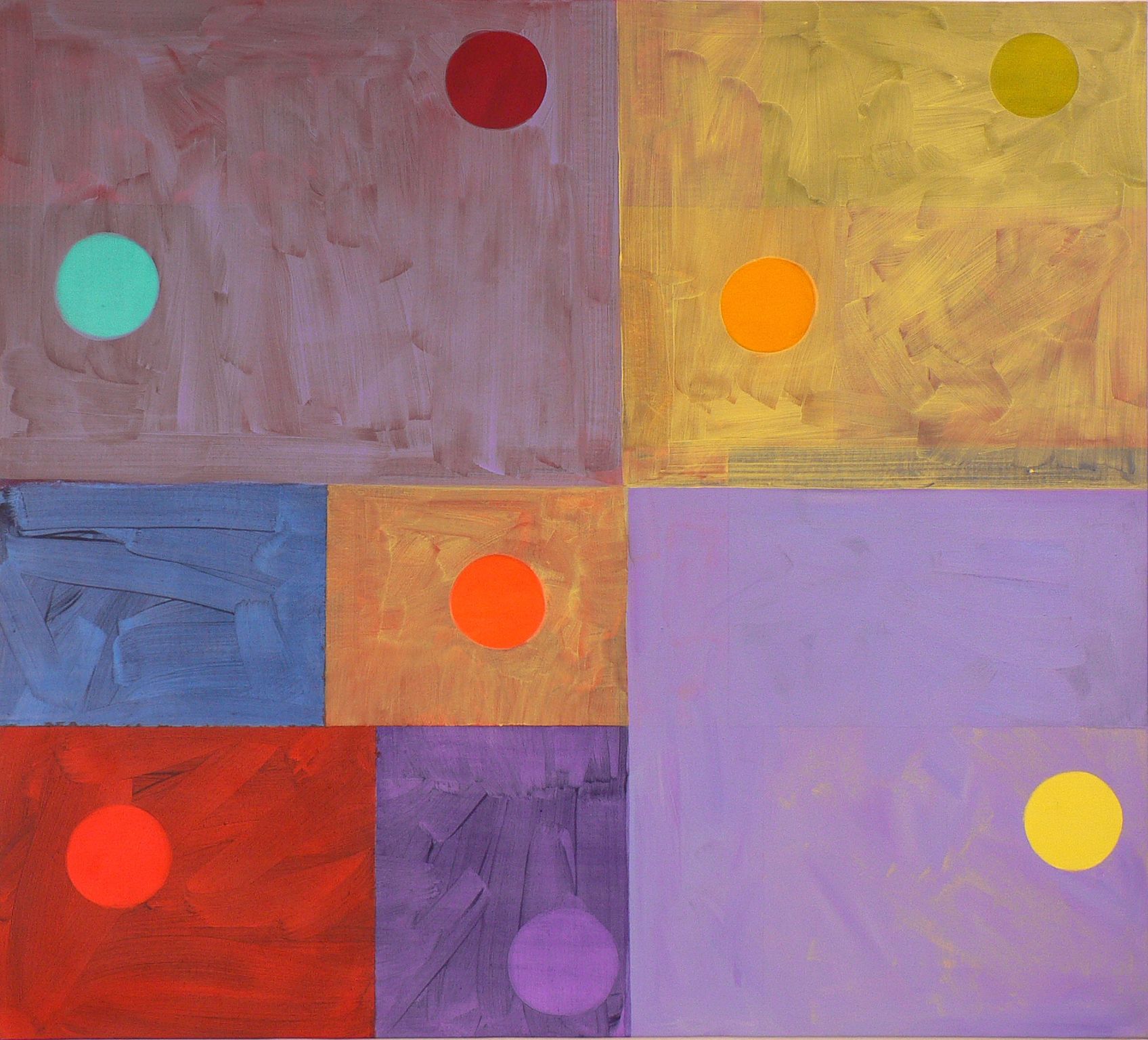
Culture Editor Ilina Jha reviews Mali Morris’ latest exhibition: Calling, considering it to be a fantastic new development in the artist’s career.
Calling, an exhibition of the work of abstract painter Mali Morris, is now open at the Ikon Gallery. Having first exhibited at Ikon Gallery in 1979, Morris has spent over five decades mastering the art of painting. Calling (curated by Sam Cornish) focuses on the latter half of this impressive career, highlighting the significant change in Morris’s work since the late 1990s. I was lucky enough to be invited to the press tour of Calling on Tuesday 19th September, where Morris and Cornish spoke to us about the exhibition.
The large, white rooms in which the exhibition is housed work perfectly to highlight Morris’s brightly-coloured abstract art. The layout of the paintings is very roughly chronological, with most of Morris’s earlier works situated in the first room of the exhibition. It is fascinating to see the differences between Morris’s late 90s and 21st century paintings – on the whole, the latter utilise much brighter shades of colour than the former, and also tend to be larger. I prefer the earlier works in this exhibition, but nevertheless appreciate the skill and artistry of the later pieces.
Space is very important in the Calling artworks, as is (rather ironically for still art) movement
What marks the second half of Morris’s career, and thus what links the paintings in Calling, is the use of ‘clearing’ (removing) layers of paint to reveal colours that have been painted beneath. Morris’s first piece of this kind is Lap (Maroon/Yellow), which is perhaps my favourite painting of the whole exhibition. Something about the deep maroon colours, as well as the strange shapes and dark edges that the ‘clearing’ has created, really speaks to me. Additionally, the painting features an oval ring of paint fingerprints that Morris herself created, which adds an intriguing contrast to the artwork. Many other paintings that featured ‘clearing’ used circles to facilitate this; on the press tour, Morris explained that this was partly for ease of use, but also because she feels that circles can hang and move in space more readily than other shapes (such as squares, for example). Space is very important in the Calling artworks, as is (rather ironically for still art) movement. Morris uses ‘clearing’ to great effect in her paintings – the circles frequently offer a bright colour contrast to their surroundings, and there is something rather radical and hopeful in the idea of hidden colours bursting through the outer paint layers to show themselves.
All the paintings in Calling have been created using acrylic paint on canvas, and it is very interesting to look at the artworks close up to see the varied textures of the canvas and paint layers. A few of Morris’s paintings in Calling show the end of a brush stroke very clearly by the patterns made at the end, which I find rather remarkable – for example, the marks at the end of the large brush strokes in Line Dancer look like animal claws. Whether or not this was Morris’s intention I do not know, but the effect is nevertheless very striking.
Morris is certainly an accomplished, prolific, and inventive painter
Overall, Calling serves as an excellent introduction to Mali Morris’s work for those who are unfamiliar with it, and clearly conveys the changes that have taken place in the painter’s career over the past 25 years. Morris is certainly an accomplished, prolific, and inventive painter, and I would highly recommend viewing her work.
Enjoyed this? Read more from Redbrick Culture here!
Theatre Review: The Woman in Black
Comments